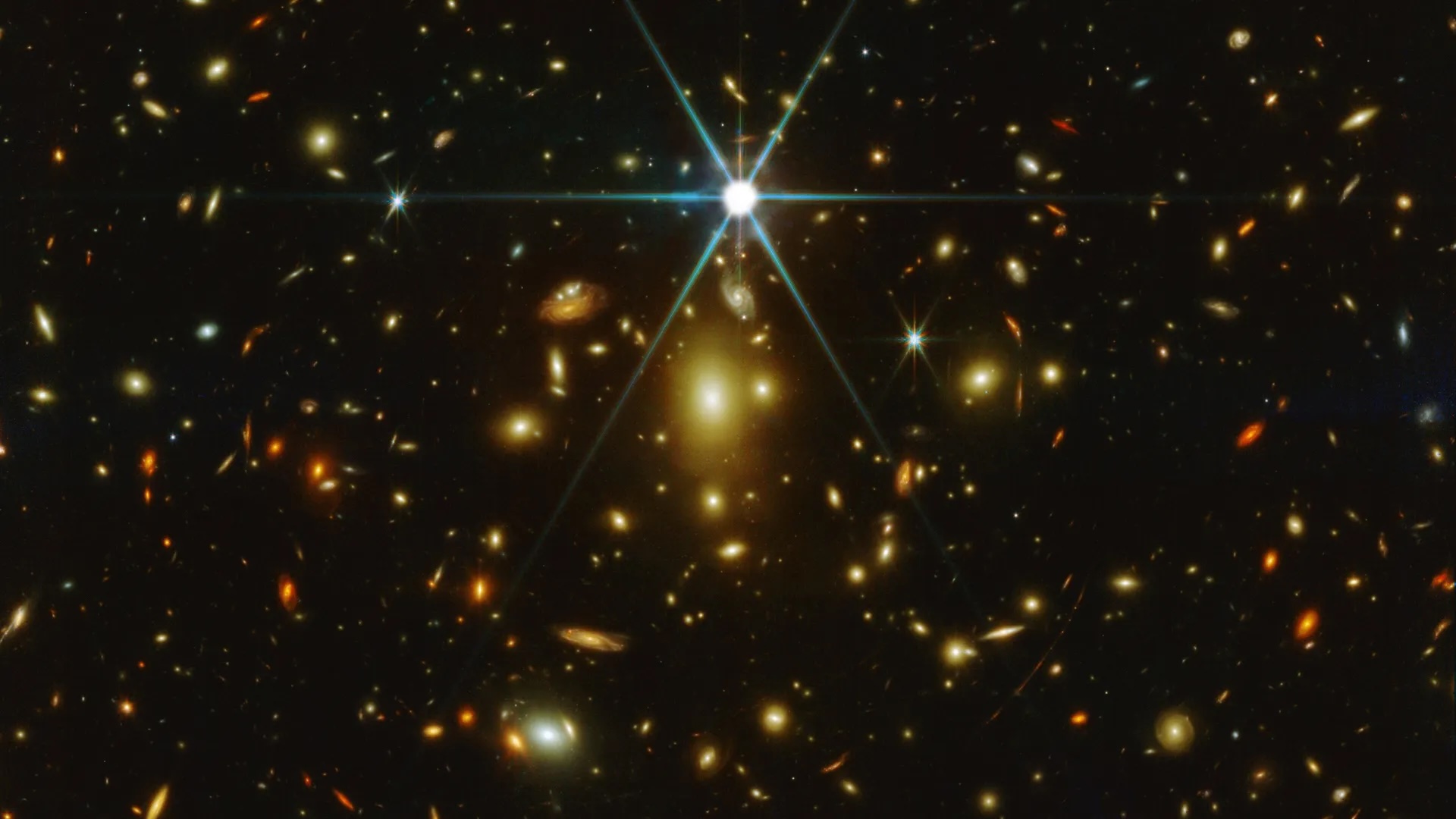Oops! Earendel, most distant star ever discovered, may not actually be a star, James Webb Telescope reveals
Astronomers used the James Webb Space Telescope to investigate whether the most distant star identified in the universe is, in fact, a star cluster.

The most distant star ever discovered may have been misclassified: Instead of being a single star, the object — nicknamed Earendel from the Old English word for "morning star" — may be a star cluster, a group of stars that are bound together by gravity and formed from the same cloud of gas and dust, new research suggests.
Discovered by the Hubble Space Telescope in 2022, Earendel was thought to be a star that formed merely 900 million years after the Big Bang, when the universe was only 7% of its current age.
Now, in a study published July 31 in The Astrophysical Journal, astronomers used the James Webb Space Telescope (JWST) to take a fresh look at Earendel. They wanted to explore the possibility that Earendel might not be a single star or a binary system as previously thought, but rather a compact star cluster.
They found that Earendel's spectral features match those of globular clusters — a type of star cluster — found in the local universe.
"What's reassuring about this work is that if Earendel really is a star cluster, it isn't unexpected!" Massimo Pascale, an astronomy doctoral student at the University of California, Berkeley, and lead author of the study, told Live Science in an email. "[This] work finds that Earendel seems fairly consistent with how we expect globular clusters we see in the local universe would have looked in the first billion years of the universe."
Ancient object
Earendel, located in the Sunrise Arc galaxy 12.9 billion light-years from us, was discovered through a phenomenon known as gravitational lensing, a phenomenon predicted by Einstein's theory of general relativity in which massive objects bend the light that passes by them. A massive galaxy cluster located between Earth and Earendel is so large that it distorts the fabric of space-time, creating a magnifying effect that allowed astronomers to observe Earendel's light, which would otherwise be too faint to detect. Studies indicate that the star appears at least 4,000 times larger due to this gravitational lensing effect.
This magnifying power is strongest in some special regions. If a star or galaxy happens to be right next to one of these regions, its image can be magnified hundreds or thousands of times brighter than normal. Earendel seems to sit extremely close to one of these "sweet spots," which is why we can see it even though it is almost 12.9 billion light-years away. Such near-perfect alignments are incredibly rare, which made astronomers consider alternative explanations beyond a single star.
Get the world’s most fascinating discoveries delivered straight to your inbox.
Related: Giant, cosmic 'Eye of Sauron' snapped staring directly at us in stunning 15-year time-lapse photo
After Earendel's discovery in 2022, researchers analyzed the object using data from JWST's Near Infrared Imager (NIRCam). By examining its brightness and size, they concluded that Earendel could be a massive star more than twice as hot as the sun and roughly a million times more luminous than our star. In the color of Earendel, astronomers also found a hint of the presence of a cooler companion star.
"After some recent work showed that indeed Earendel could (but is not necessarily) be much larger than previously thought, I was convinced it was worthwhile to explore the star cluster scenario," Pascale said..
Using spectroscopic data from JWST's NIRSpec instruments, Pascale and team studied the age and metal content of Earendel.
The team looked at Earendel's spectroscopic continuum, which basically shows how its brightness smoothly changes across different wavelengths of light. This pattern matched what would be expected from a star cluster and, at the very least, matched the combined light of multiple stars.
"The new part of this study is the NIRSpec spectrum, which provides a bit more detail than was possible with the NIRCam data," said Brian Welch, a postdoctoral researcher at the University of Maryland and NASA Goddard Space Flight Center who led the team that discovered Earendel in 2022 but was not involved in the new study.
But Welch doesn't think the new data is enough to confirm that Earendel is a star cluster.
"At the spectral resolution of the NIRSpec [instrument], the spectrum of a lensed star and a star cluster can be very similar. It is therefore important to consider all available data when attempting to classify these highly magnified objects," Welch told Live Science in an email.
The researchers have only explored the "star cluster" possibility. They did not investigate all possible scenarios, like Earendel being a single star or a multiple star system, and compare the results.
"The measurement is robust and well done, but in only considering the star cluster hypothesis, the study is limited in scope," Welch noted.
Both Pascale and Welch agreed that the key to solving Earendel's mystery is to monitor microlensing effects. Microlensing is a subtype of gravitational lensing in which a passing object temporarily distorts the image of a distant object when a nearer object lines up in front of it as it passes by. Changes in brightness due to microlensing are more noticeable when the distant objects are small — such as stars, planets or star systems — rather than much larger star clusters.
"It will be exciting to see what future JWST programs could do to further demystify the nature of Earendel," Pascale said.
James Webb Space Telescope quiz: How well do you know the world's most powerful telescope?

Shreejaya Karantha is a science writer specializing in astronomy, covering topics such as the sun, planetary science, stellar evolution, black holes, and early universe cosmology. Based in India, she works as a writer and research specialist at The Secrets of the Universe, where she contributes to scripts for research-based and explainer videos. Shreejaya holds a bachelor's degree in science and a master's degree in physics with a specialization in astrophysics.
You must confirm your public display name before commenting
Please logout and then login again, you will then be prompted to enter your display name.


